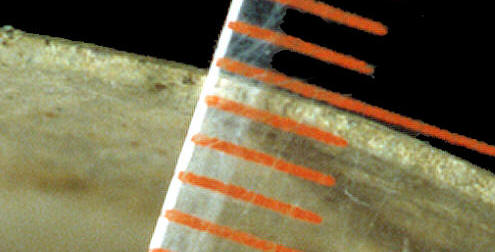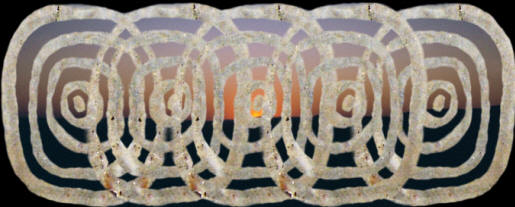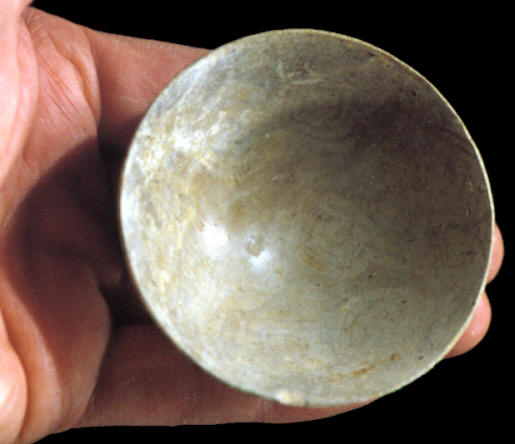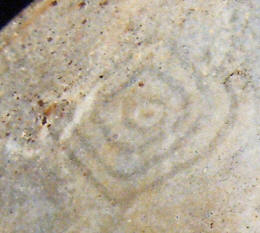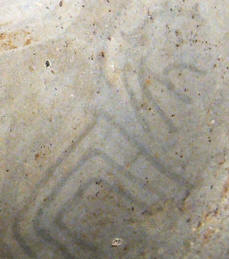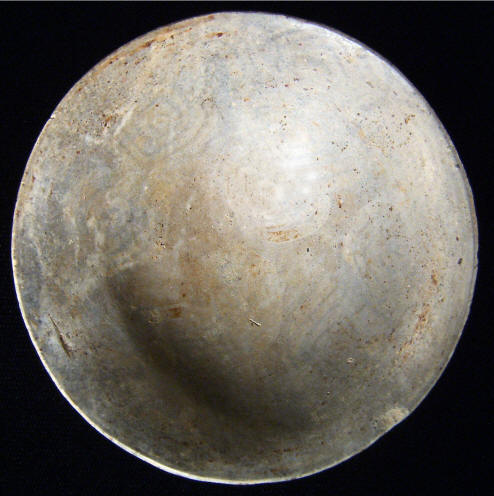|
||
|
||
|
"Another method
of pottery ornamentation practiced by the townspeople (Mississippian
people) is known as negative
painting. It is achieved by painting the design with a substance that
resists taking the color. Thus when the color is applied, only the
untreated areas receive it."---1964,
Carl H. Chapman & Eleanor F. Chapman, "Indians And Archaeology Of
Missouri, p. 69.
The Mississippian culture produced ceramic vessels in large numbers. They have been found in every conceivable size and style. Most of them are represented by undecorated bottles, jars or bowls from small village house sites. A smaller percentage of these are decorated with engravings, paint and sculpted images of animals. Some of the most interesting ceramic vessels, but fewer in number, were made in a style with images that portray mythological concepts. These more skillfully crafted pots were placed with burials or were used in other types of ritual ceremonies. The decorative cup described in this article may have been used in this way. |
||
|
||
|
The majority of all Mississippian potters were most probably women. They made their ceramic vessels by the coil method without the use of a potter's wheel. Their tool kit would have included such things as pottery trowels and stones for smoothing and shaping the clay surface. They would also have used various types of bone, wood or stone tools for engraving and cutting designs into the clay. Some of the more intricate vessels were painted with pigments that were processed from both organic and inorganic materials. To insure against cracking, an additional temper or grog material was added to the clay in the form of crushed bone, sand or mussel shell. The production of a single pot involved many different gathering, refining and manufacturing processes. |
||
|
||
|
Individuality does not seem to have been one of the goals of the Mississippian potters. Although there are differences in skill levels that can observed, they followed an established pattern of design. Some of the imagery is understood in some form or another today, but a good percentage of the designs will probably never be completely understood. |
||
|
The small ceramic cup, that is illustrated in this article, was reported to have been found by a man who is now deceased and once lived in the Collinsville area in Madison and St. Clair counties. It's reported that he accumulated a small collection by surface hunting in farm fields in the area. This small cup or dish is so delicate that it was probably found in a washout after a heavy rain. The "great flood of 1954" is one possibility. Many people were surface collecting on and near mound 34 at Cahokia where heavy water erosion cut large ravines through the farm fields. Mound 34 is one of the only known areas where fragments of negative painted pottery has been found on the site. |
||
| CONTINUE ON TO PAGE TWO | ||
|
"REFERENCES"
1964, Chapman, Carl H. & Chapman,
Eleanor F., "Indians And Archaeology Of Missouri, pp. 69 & 296. |
||
